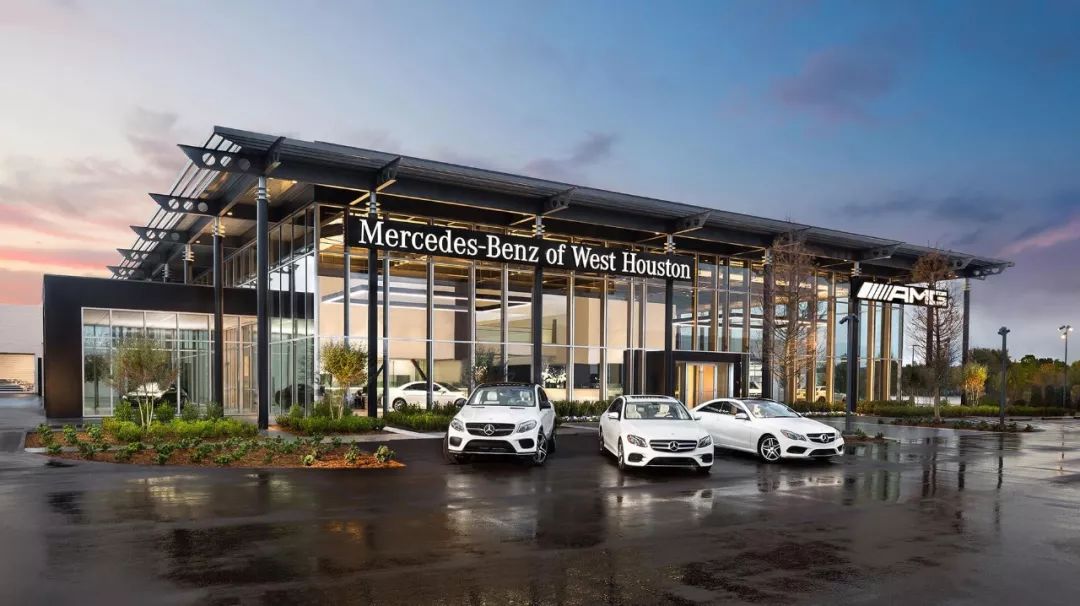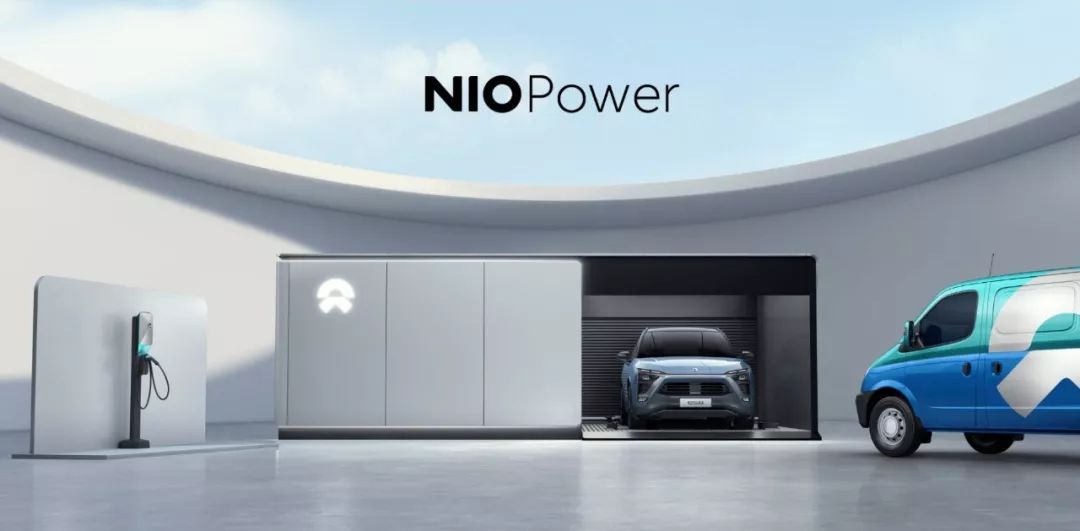When I wrote this article, NIO’s stock price had fallen below $5, hitting a new low since its IPO. On the day after NIO’s IPO, its stock price skyrocketed to $12.69, and its market value reached $13.019 billion. What did believers of NIO see? What are non-believers denying?
Below, I will focus on NIO Power, NIO’s electric solution, to talk about how we view NIO Power and how NIO is changing the industry.
The reason why I focus on NIO Power is that, in my opinion, NIO Power is the most “NIO” element of NIO, fully embodying NIO’s values and Li Bin’s designed business model. In fact, the biggest criticisms that NIO has faced since its establishment are all directly or indirectly related to NIO Power.
In NIO’s business system, NIO Power is more important than any other product or business, such as ES8, ES6, and NIO House. NIO Power is at the absolute core of NIO’s business system. The automotive industry follows the principle of a barrel: the amount of water that a barrel can contain depends on the shortest plank. But NIO Power is a magical plank that is not only long enough but also can be grafted onto other short planks, invisibly increasing the maximum water capacity of NIO’s barrel.
How is the automotive user experience composed?
To better answer “What do you think of NIO Power? How is NIO changing the industry?” I decided to take some time to talk about how the automotive industry defined the user experience before NIO.
Before June 22, 2012, when Tesla’s Model S had not yet been delivered, the entire automotive industry’s user experience was defined by traditional automakers.

What are the user experience “processes” that you will go through when you own a Mercedes?
-
First, go to a Mercedes 4S dealership to see the car, test drive, and sign the car purchase contract.
-
Second, pay the down payment (or full amount) and apply for a loan.
-
Third, purchase insurance, including mandatory and commercial insurance.
-
Fourth, obtain temporary and official license plates.
-
Fifth, pay the purchase tax and pick up the car.
-
Sixth, go to a gas station to refuel.
-
Seventh, go to the 4S dealership for maintenance and repairs.
-
Eighth, go to the used car market for an appraisal and sale.In this process, you will come into contact with car dealerships, banks, insurance companies, motor vehicle departments, gas stations, and used car dealers, but the one company you will not come into contact with is Mercedes-Benz itself.
Even though most people are still not aware of the seriousness of the problem, today, the user experience “process” in the automotive industry for over 95% of users is still like this.
On June 22, 2012, Tesla delivered its first Model S. Around this first intelligent electric car, Tesla expanded its business horizontally to direct sales, delivery, service, and charging (Supercharger, Destination Charger, and Home Charger).
For a start-up company, involving multiple related fields too early and having a significantly high level of business complexity would increase operational risks. However, at the same time, Tesla successfully reduced the number of companies that users have to come into contact with throughout the entire lifecycle experience to just two: regulatory authorities (motor vehicle departments, traffic police, etc.) and Tesla.
Everyone knows the high barriers to entry in the automotive industry, not to mention that the cruel competition of China’s new car-making movement has already begun. Even Elon Musk, who has been a serial entrepreneur in Silicon Valley with ample capital and extensive networks, views starting a smart electric car company in the automotive industry as “idiocy squared”.
So, how has Tesla performed?
From 2015 to 2018, Tesla topped the Consumer Reports’ reliability rankings at the bottom three for three consecutive years and user satisfaction rankings at the top. Two conflicting indicators concentrated on the same brand. In addition to the innovative experience brought by Tesla’s long-term leading position in the smart electric field, the completely restructured user experience “process” was the real killer that impressed users.
The barbarian Tesla restructured the user experience “process” with a completely different strategy and achieved enormous success. For the veterans of the automotive industry and those from the traditional automotive industry, they cannot understand why Tesla had to spend a lot of effort to get involved in multiple fields to increase business complexity. Even more puzzling to them is why consumers give the highest satisfaction to brands with poor workmanship, simple interiors, and the worst reliability rankings.
This is a typical reaction of the industry insiders to disruptive innovation: they cannot see it, they look down on it, they do not understand it, and they cannot catch up with it.
How we see NIO Power
As mentioned earlier, NIO Power is at the absolute core of NIO’s business system. For NIO, the failure of a single model or a single technological module can be compensated or corrected by increasing attention and investment. However, if NIO Power fails, it means that NIO’s values and business models are problematic, it is a failure of the basic path, and a failure of the foundation.The official definition of NIO Power by NIO is as follows:
NIO Power is a recharging solution based on mobile internet, offering a wide layout of charging and switching stations. With the support of NIO’s cloud technology, users can experience specialized and convenient charging solutions that exceed their expectations, making charging as easy as refueling.
The key elements here are based on mobile internet, charging and switching stations, and cloud technology. These connect NIO’s mobile charging vehicles, switching stations, and supercharging piles on the supply side with vehicles on the demand side using a road service team through cloud technology.
To date, NIO has deployed over 100 switching stations and over 500 charging cars in first and second-tier cities in China. Next month, NIO’s self-built supercharging piles will also be officially launched.
Whenever a NIO car owner has a need for charging, the user can simply place an order on the NIO app, and the back-end system uses big data to make a decision based on LBS for the best user experience, proximity, and lowest cost for recharging facilities to meet user’s charging needs.
Firstly, let’s justify the rationality of NIO Power. According to Percy Shen, vice president of NIO Energy, there is a difference in core demands between the groups of people who purchase fuel cars and those who purchase electric cars:
-
Demands of fuel car consumers: care about cars, not refueling
-
Demands of electric car consumers: care about cars and recharging
In fact, Tesla and NIO have reached a consensus on this issue. Tesla, in particular, has invested more emphasis in solving user charging issues. In my opinion, Tesla’s supercharging station network is an excellent project that builds on user experience.
Li Bin has said before that “BBA is a 1.0 company, Tesla is a 2.0 company, and NIO is a 3.0 company.” Although this statement may cause a natural resentment, as we mentioned earlier, the key elements of NIO Power are based on mobile internet, charging and switching stations, and cloud technology. In this regard, I believe this statement holds true.
According to Percy Shen, gas stations are centralized, while NIO Power is decentralized. How should we interpret this statement?
Restaurants are centralized, while takeout is decentralized. The earliest postal mail was centralized, while express delivery is decentralized. As for decentralization, it is through mobile internet connections that the supply and demand networks on both sides lose explicit central control nodes and become a vast network of supply and demand nodes.
The efficiency of the decentralized model is far higher than that of the centralized model. For example, companies like Meituan Waimai and Didi Chuxing have greatly improved the efficiency of supply and demand matching, and have brought better user experience.However, NIO Power has a bug: while the movable charging vehicles in NIO Power have the conditions for decentralization, the stationary battery swapping stations and the upcoming high-capacity chargers are still essentially centralized charging facilities. How can we solve this problem?
All demand-side vehicles are movable and NIO Power provides a decentralized user experience based on a centralized energy model by offering the convenience of one-click power delivery and customer battery swapping services.
NIO Power has surpassed Tesla’s Supercharger network in providing a unified high-quality user experience that is not exclusive to Tesla vehicle owners or focused solely on output power. However, there is a critical issue: the business model is not sustainable.
To further explain how NIO provides a decentralized user experience based on a centralized energy model, let’s take a look at the one-click power delivery and customer battery swapping services. This strategy is nothing extraordinary, and it shares no substantial differences with the O2O models that have dominated various industries in recent years.
NIO cannot overlook the fact that, according to the current pricing and services offered by the carefree energy plan, NIO Power cannot turn a profit. Of course, Li Bin has previously stated that NIO Power’s positioning is “not to make money, but to break even in the end.” However, based on the current pricing, even excluding fixed investment costs, NIO Power is still unable to achieve profitability due to energy and labor costs.
At this point, we have realized that our discussion of NIO Power’s order is consistent with Li Bin, NIO’s values, and the company’s ethos. We first discuss NIO Power’s excellent user experience and advanced concept, followed by whether it can make money, or break even, and whether it is sustainable over the long term. In reality, these are Li Bin’s most frequently used words: “user experience” and “systematic efficiency.”
NIO’s style is often to prioritize user experience before considering the systematic efficiency of the entire model. However, as mentioned earlier, there is still room for improvement in the systematic efficiency of NIO Power. It is certain that this business cannot be self-sufficient and profitable.
As previously stated, NIO Power is the most “NIO” element of NIO, reflecting the company’s values and the business model designed by Li Bin perfectly. If NIO Power cannot be standalone and profitable, does this mean that NIO is simply a beautiful bubble?Actually, when Amazon launched the Amazon Prime membership system in 2005, when JD.com decided to build their own logistics system in 2007, and when Tesla established the Supercharger network in 2012, they all faced similar doubts. Today, these three industry-leading businesses, even those ranked first, have not achieved a thorough break-even point.
Why should we believe that NIO Power will achieve break-even?
But from another perspective, the above three businesses are also one of the core competitive advantages of their companies in terms of user experience. At the same time, through empowering their core businesses and promoting their brands, today’s doubts about them have long since disappeared, and these three companies have built very deep user experience moats.
The final question is, will the high-quality experience provided by NIO Power empower NIO’s main business of car sales, and will the profit from car sales offset NIO Power’s losses? To what extent can an increasing number of battery swapping stations and mobile charging cars, which officially launched in April, continue to add points to NIO’s brand operation and promotion?
Is NIO Power an O2O that should be shut down or a Tesla Supercharger network of the mobile Internet era?
I’d like to believe that NIO Power is the next Tesla Supercharger network.



This article is a translation by ChatGPT of a Chinese report from 42HOW. If you have any questions about it, please email bd@42how.com.
